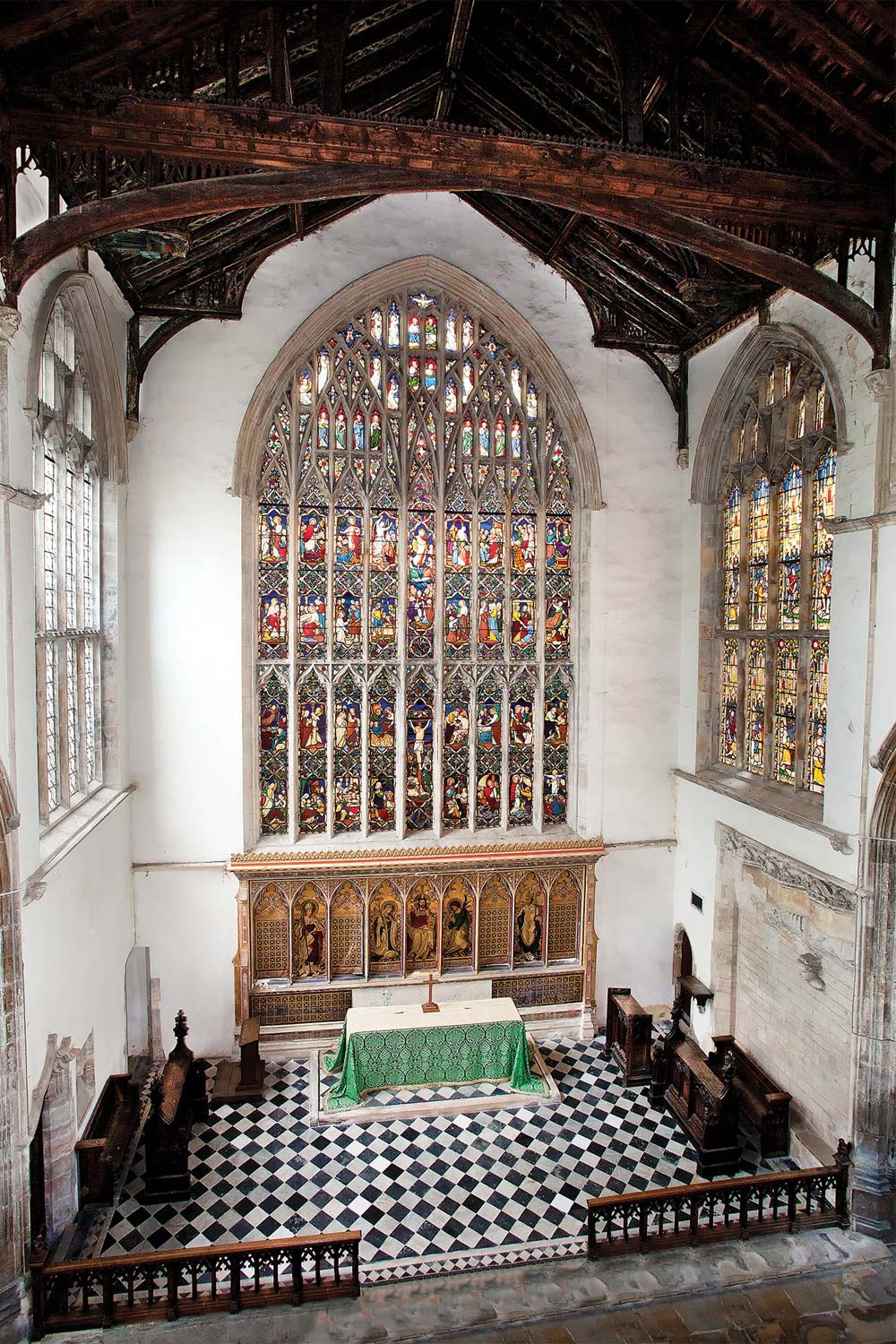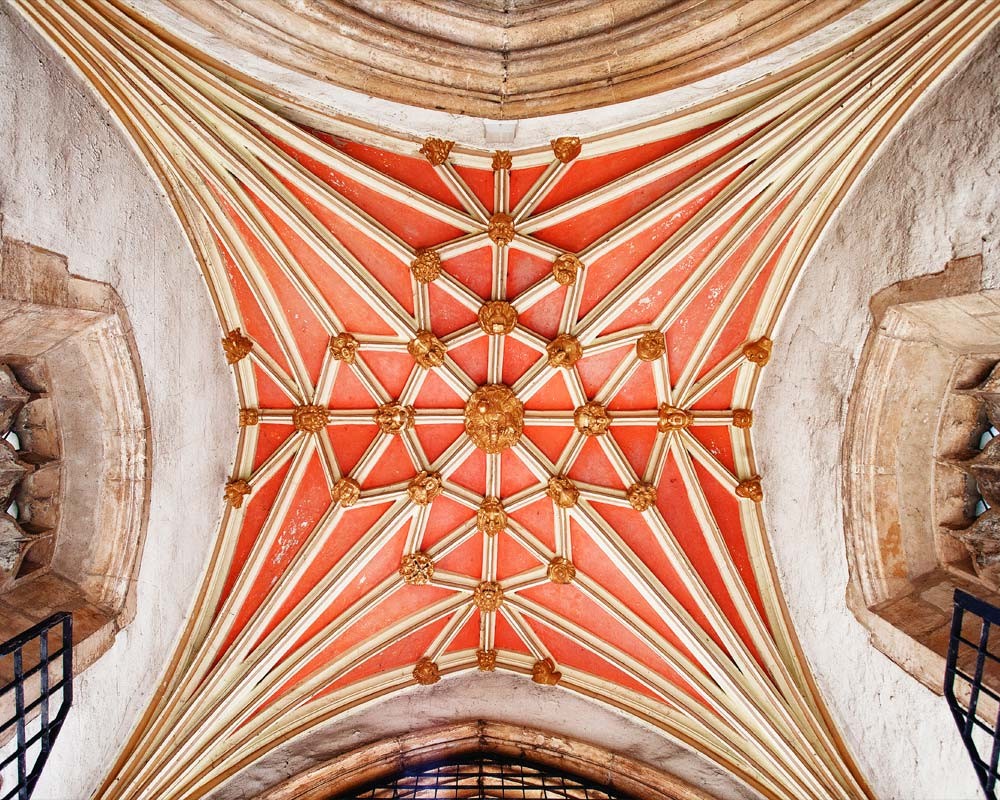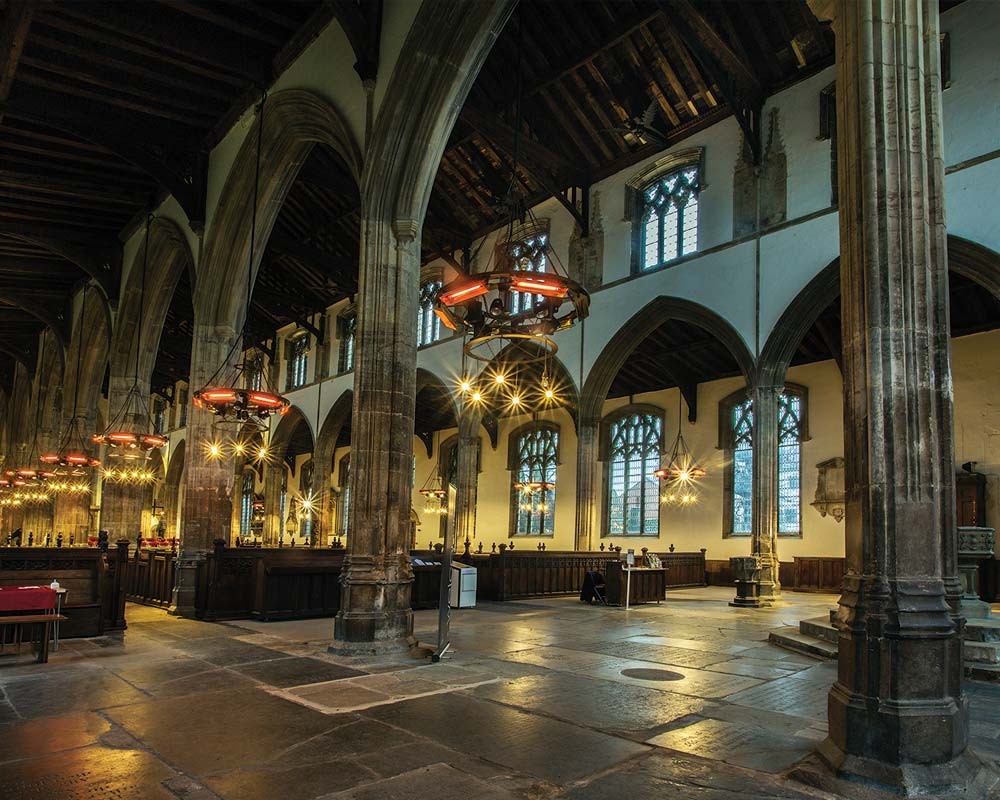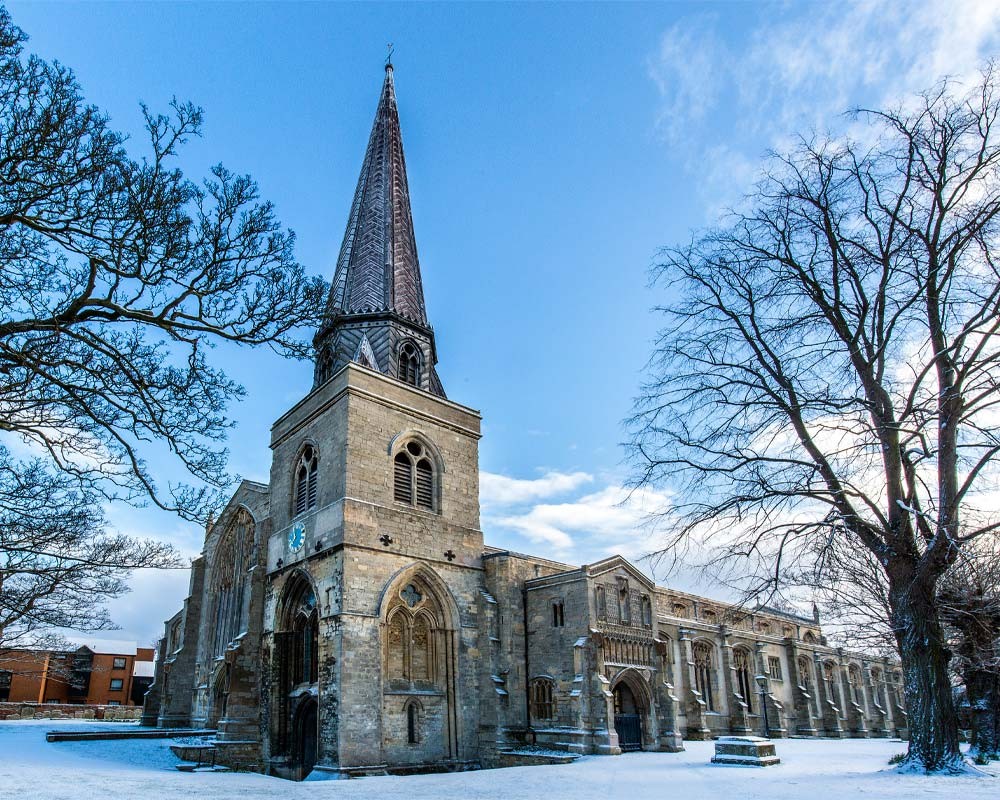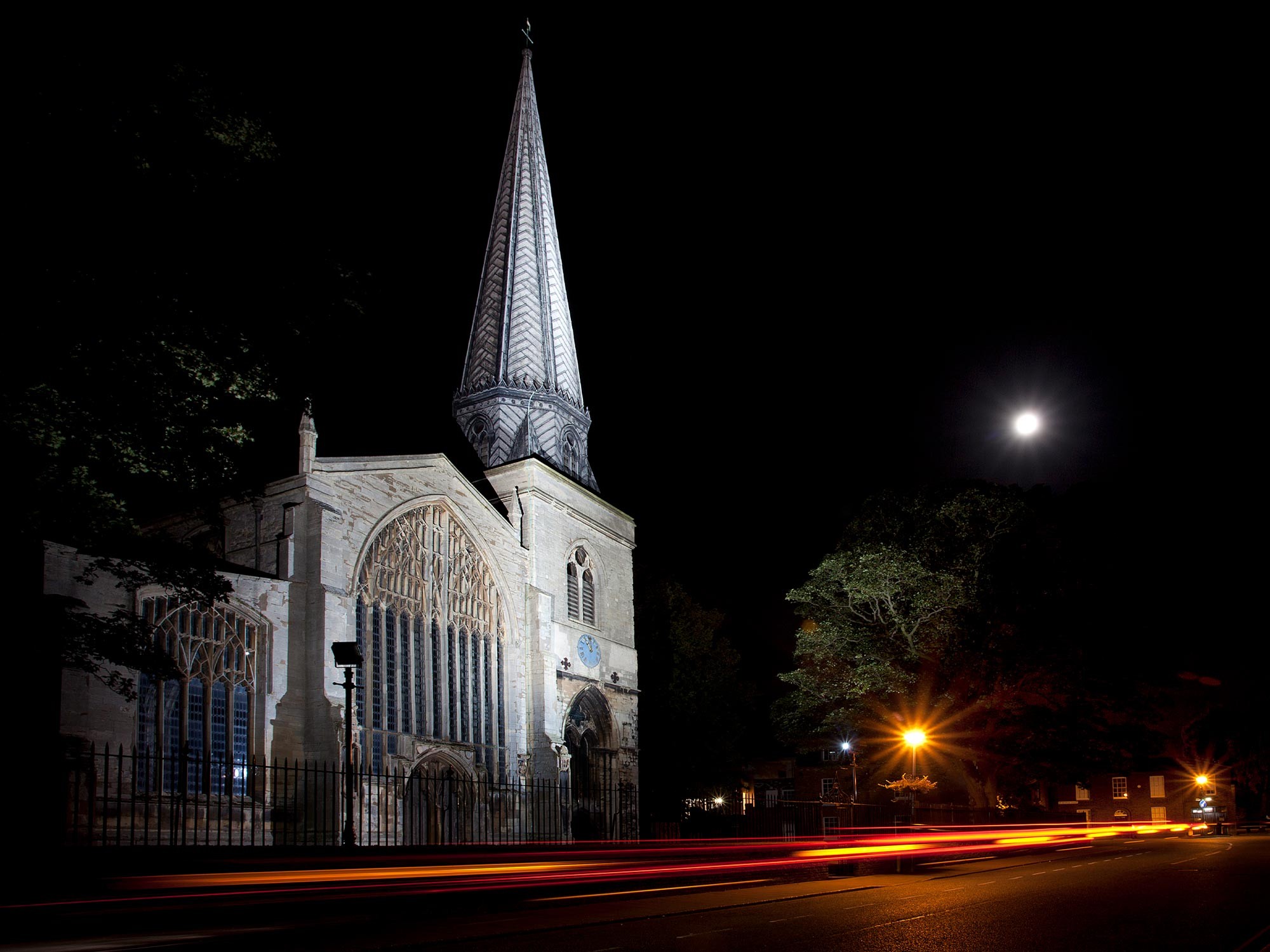
St Nicholas’ Chapel
Large, light and airy, it’s a hymn to the glory of God in its lofty interior and at the same time a memorial to the merchants of Lynn whose wealth paid for this new church – which was first mentioned in 1419. There was already a chapel of ease (meaning it was easy to get to) here founded by Bishop Turbe of Norwich when he built the new town of Lynn from the Purfleet to the North End in 1146, but no trace of that remains.
Bigger than many parish churches, St Nicholas’ is the largest chapel in England and has never lost its ‘chapel’ status.
The first child baptised in the impressive font was Anne Raylie, who only lived for 24 days – although her memorial brass can still be seen nearby. A tall wooden font cover (purely decorative) was copied and replaced in 1903, and some time after it was removed in 1968 it surfaced in an antique shop in London – and was brought home and reinstated in 2018.
Visitors have long been intrigued by the ‘Robinson Cruso’ gravestones in the floor of the chapel. The idea that Daniel Defoe borrowed the name for his classic 1719 tale of Robinson Crusoe is attractive, but doesn’t hold up to closer scrutiny. Defoe certainly came to Lynn, but the dates on the ledger stones are later than the publication of his famous book.
For over 600 years, the wonderful carved angel roof of St Nicholas’ has soared above the vast nave. Each of the 24 angels is performing a different activity, and the one holding a recorder represents the earliest portrayal of the instrument in church carvings.
Most striking are the memorials to local merchant families. Richard and Joan Clarke are realistically moulded and painted, as are Thomas and Sarah Greene – who are portrayed with their nine children all kneeling on cushions. Also of note is the fine 1758 funeral urn for Sir Benjamin Keene, ambassador to Naples.
Although the spire blew down in the great gate of 1741 it didn’t fall into the church –but note that the present impressive spire is Victorian. St Nicholas’ Chapel reopened in 2015 after a £2.7m conservation and regeneration project. It’s currently in the hands of the Churches Conservation Trust, but remains a consecrated church – and a dedicated team of volunteers welcomes visitors to this quite beautiful building.
